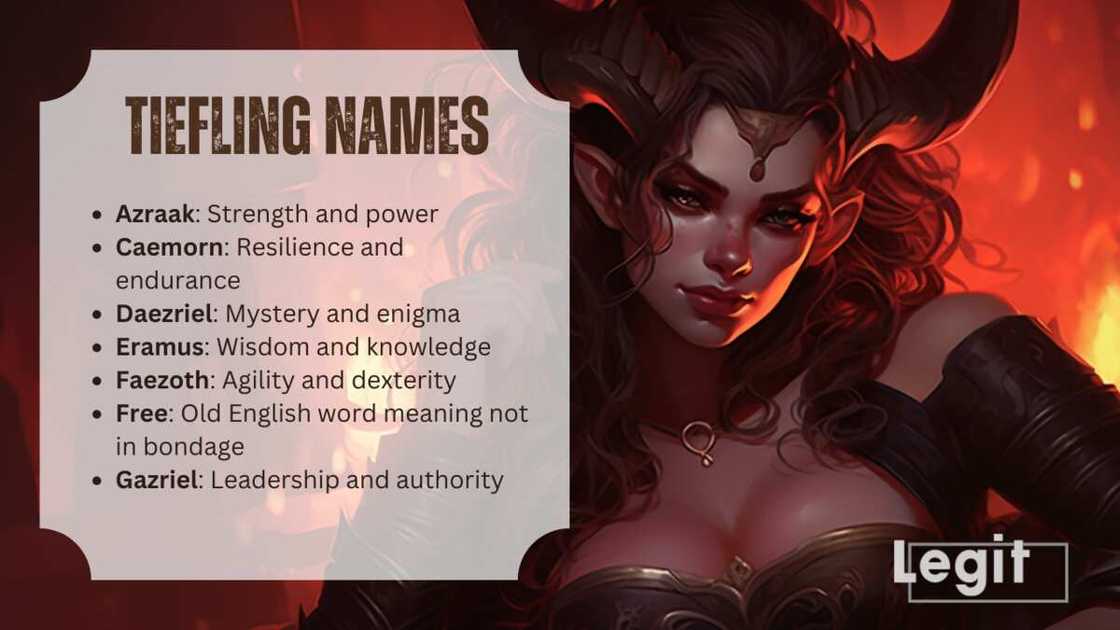Tieflings are among the most intriguing and complex races in fantasy settings. With their distinct features—horns, tails, and vibrant skin tones—they capture the imagination of players and storytellers alike. But beyond their striking appearance lies a rich tapestry of culture and history that shapes their identities, including how they are named.
The names for tieflings carry deep meanings rooted in mythology, language, and individual character backstories. Whether you’re creating a new tiefling character for your tabletop game or simply curious about this enigmatic race, understanding where these names come from can enrich your experience. Let’s delve into the origins of tiefling names and explore what makes each one unique!
Origins of the Name
The name “tiefling” has intriguing roots in fantasy literature. It derives from the term “tiefling,” which translates to “one of low status” or “from below.” This reflects their connection to darker realms and infernal ancestry.
In many tabletop role-playing games, tieflings are depicted as descendants of humans who made pacts with demonic beings. Their names often evoke a sense of mystery and otherworldliness.
Historically, folklore features similar characters, emphasizing themes of duality—between light and darkness. Tieflings embody this balance through their unique heritage.
When creating a name for your tiefling character, consider these origins. Names can reflect traits like cunning or resilience while hinting at their complex history. The blend of culture and individuality is what makes each tiefling’s identity compelling in storytelling.
Cultural Influences on Tiefling Names
Tiefling names are often steeped in rich cultural influences that draw from various mythologies and fantasy traditions. The deep connection to infernal heritage plays a significant role, with many names reflecting the fiendish origins of these characters.
Historically, tieflings have been associated with diverse cultures. For example, some names may evoke elements from Middle Eastern or Asian languages, hinting at their arcane roots.
Additionally, the naming conventions can mirror real-world historical figures or literary references. This adds an extra layer of depth when crafting a character’s identity.
Moreover, social status within their communities can influence name choices too. A noble tiefling might possess more elaborate names compared to those from humble backgrounds.
Each name serves as a narrative tool that provides insight into the character’s story and background while keeping players engaged in their unique journey.
Common Themes in Tiefling Names
Tiefling names often reflect their unique heritage. Many incorporate elements of infernal or demonic languages, giving them an exotic flair. This connection to otherworldly origins can evoke mystery and intrigue.
Another common theme is the use of nature-inspired prefixes or suffixes. Names like “Thorn” or “Flame” might embody traits that define a tiefling’s personality or abilities. Such choices offer depth and narrative potential.
Cultural influences play a significant role as well. Tieflings from diverse backgrounds may blend traditional naming conventions with their fiendish ancestry, resulting in compelling combinations that tell stories of acceptance, struggle, and identity.
Additionally, many tieflings have names symbolizing their ambitions or emotional states—like “Hope” for one seeking redemption or “Vengeance” for those driven by past grievances. Each name becomes more than just an identifier; it serves as a reflection of the character’s journey through life’s complexities.
Roleplaying Tips for Naming a Tiefling Character
When naming your tiefling character, consider their background and heritage. A name can reflect a rich history or hint at untold stories. Think about the influences that shaped them—parentage, culture, and even personal experiences.
Mix traditional names with unique twists. Tieflings often have exotic-sounding names that blend different linguistic styles. Experiment with syllables to create something memorable yet fitting for their infernal ancestry.
Consider using meaning as a guide. Names can symbolize traits such as ambition or resilience. This adds depth to your character beyond mere aesthetics.
Don’t forget pronunciation! Choose a name that’s easy for you and others to say during gameplay. It helps maintain immersion without stumbling over complex sounds while narrating adventures in the realms of fantasy.
Diving into the World of Tiefling Names in Popular Culture
Tieflings have carved a unique niche in popular culture, often reflecting their rich and complex backgrounds. Video games like Dungeons & Dragons showcase these characters with vibrant names that resonate deeply with their infernal heritage.
In literature, tiefling names evoke mystery and allure. Authors play with phonetics to create intriguing combinations that hint at the character’s lineage or destiny. Names often carry an otherworldly charm, drawing readers into the narrative.
Television series also highlight tieflings through memorable characters. Their names can symbolize rebellion or resilience, reinforcing themes of acceptance and identity.
Comics frequently depict tiefling heroes as misunderstood outcasts. Their names reflect this struggle, blending traditional sounds with modern twists.
Through various media, tiefling names continue to evolve, showcasing creativity while remaining rooted in tradition. The interplay between name meaning and character development offers endless possibilities for storytelling within fantasy realms.
Conclusion
The world of tieflings is rich and vibrant, filled with complexity. Their names reflect this depth, often drawing from various cultural influences that add layers to their identities. Whether you’re crafting a character for your next campaign or simply fascinated by the lore, understanding the origins and themes behind tiefling names can enhance your roleplaying experience.
Names for tieflings are not just labels; they tell stories. Your choice can convey background, personality traits, or even aspirations. Dive into the cultural tapestry that inspires these names and let it influence how you bring your character to life.
As you explore popular culture’s portrayal of tieflings—be it in books, games, or movies—you’ll notice recurring motifs and unique interpretations. Each representation adds another brushstroke to the ever-evolving narrative surrounding these intriguing beings.
Embrace the creativity involved in naming a tiefling; it’s an opportunity to connect deeper with a character whose existence straddles two worlds. The right name can open up avenues for storytelling while enriching gameplay dynamics within any setting.
With all this knowledge at hand, embark on your journey into naming your own tiefling characters! Let their names resonate beyond mere sounds—transform them into symbols of adventure waiting to unfold.
